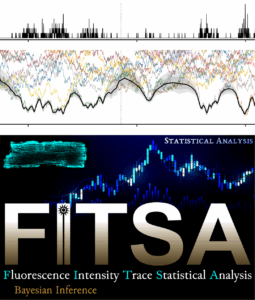Hamed Karimi, Martin Laasmaa, Margus Pihlak, Marko Vendelin
Science Advances 2025 Apr 18;11(16):eads4609
- PMID: 40249821
- DOI: 10.1126/sciadv.ads4609
Abstract
Molecular movement and interactions at the single-molecule level, particularly in live cells, are often studied using fluorescence correlation spectroscopy (FCS). While powerful, FCS has notable drawbacks: It requires high laser intensities and long acquisition times, increasing phototoxicity, and often relies on problematic statistical assumptions in data fitting. We introduce fluorescence intensity trace statistical analysis (FITSA), a Bayesian method that directly analyzes fluorescence intensity traces. FITSA offers faster, more stable convergence than previous approaches and provides robust parameter estimation from far shorter measurements than conventional FCS. Our results demonstrate that FITSA achieves comparable precision to FCS while requiring substantially fewer photons. This advantage becomes even more pronounced when accounting for statistical dependencies in FCS analysis, which are often overlooked but necessary for accurate error estimation. By reducing laser exposure, FITSA minimizes phototoxicity effects, representing a major advancement in the quantitative analysis of molecular processes across fields.
